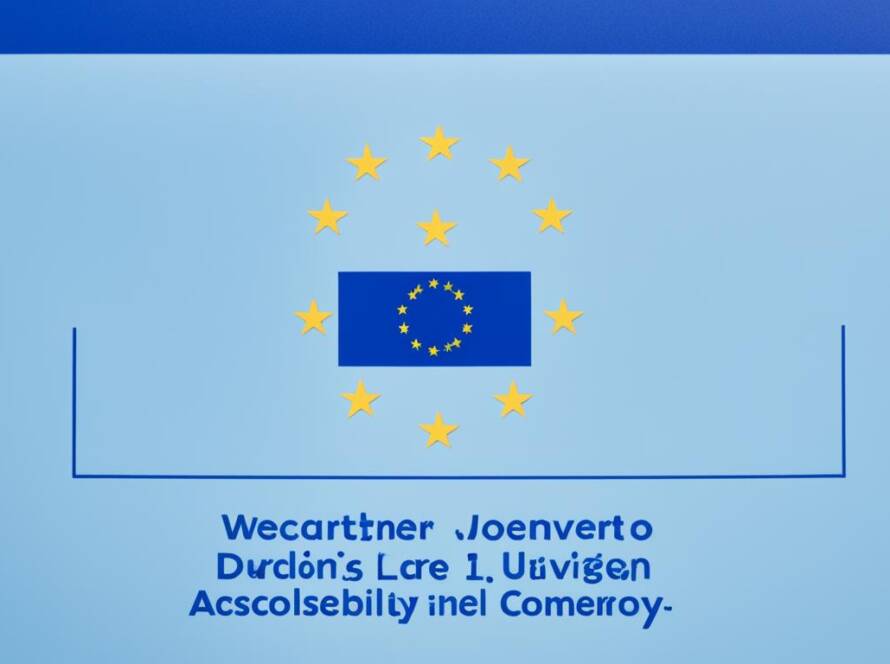As generative artificial intelligence (GenAI) becomes increasingly prominent, Europe is leading the way in establishing governance frameworks and legal standards to ensure its responsible development and use. The European Union (EU) has been proactive in crafting regulations that address the unique challenges posed by GenAI, such as transparency, ethics, and accountability. This article explores concrete examples of GenAI governance and laws in Europe, and their implications for companies and innovation.
The Foundation of GenAI Governance: The AI Act
One of the most significant regulatory frameworks influencing GenAI in Europe is the proposed Artificial Intelligence Act (AI Act). This pioneering legislation aims to regulate AI systems based on their risk level, with GenAI often falling under the higher-risk categories due to its potential impact on society.
Example: Transparency and Traceability Requirements
Under the AI Act, companies developing or deploying GenAI systems in Europe must adhere to strict transparency requirements. For instance, when a GenAI model is used to create content—whether text, images, or video—users must be informed that they are interacting with AI-generated content. This is particularly important in areas like news media, advertising, and social media, where AI-generated content could be mistaken for human-created material.
Additionally, companies are required to ensure traceability by documenting the datasets used to train GenAI models. This involves maintaining detailed records of data sources, preprocessing methods, and any algorithms applied to the data. The goal is to prevent the propagation of biases and ensure that the AI outputs are fair and non-discriminatory.
Implication: Compliance Costs and Operational Adjustments
For companies, these requirements translate into the need for robust compliance systems. Businesses must invest in new tools and processes to ensure transparency and traceability, which could involve significant costs. This might include hiring additional compliance officers, investing in auditing software, or rethinking data collection practices to ensure they meet European standards.
While these measures may increase operational complexity, they also provide companies with an opportunity to build trust with consumers and stakeholders. By demonstrating a commitment to ethical AI practices, businesses can differentiate themselves in the market, potentially leading to increased customer loyalty and brand value.
The Impact of GDPR on GenAI
Europe’s General Data Protection Regulation (GDPR) is another critical piece of legislation affecting GenAI. Since GenAI models often require vast amounts of data for training, GDPR’s stringent data protection rules have significant implications for how these models are developed and deployed.
Example: Data Minimization and Anonymization
Under GDPR, companies must adhere to principles like data minimization, which mandates that only the minimum amount of personal data necessary for a specific purpose is collected and processed. For GenAI, this means that companies must carefully evaluate the datasets they use, ensuring they do not include unnecessary personal information.
Additionally, GDPR requires that any personal data used in AI training be anonymized to protect individuals’ privacy. This can be challenging for companies relying on large datasets for training GenAI models, as they must implement sophisticated anonymization techniques that still allow the AI to function effectively.
Implication: Innovation Constraints and Ethical Data Usage
While GDPR enhances user privacy and data protection, it can also pose challenges for innovation. Companies may find it difficult to access the rich datasets needed to train advanced GenAI models without violating GDPR rules. This could slow down the pace of innovation, as companies must navigate complex legal requirements to ensure compliance.
However, these constraints also push companies towards more ethical data usage practices. By fostering innovation within these boundaries, businesses can develop AI systems that respect individual rights and are more likely to be trusted by consumers and regulators alike.
The Role of Ethical Guidelines: Trustworthy AI
Beyond legal regulations, Europe has established ethical guidelines to promote the development of trustworthy AI. The “Ethics Guidelines for Trustworthy AI,” developed by the European Commission’s High-Level Expert Group on AI, emphasize principles such as human agency, transparency, and accountability.
Example: Human Oversight in AI Decision-Making
One concrete example from these guidelines is the requirement for human oversight in AI decision-making processes. For GenAI, this means that when AI systems are used in decision-making—such as automated content moderation or personalized advertising—there must be a human in the loop who can intervene if necessary.
This oversight is crucial in preventing the unintended consequences of AI decisions, such as discrimination or the spread of misinformation. Companies are encouraged to design AI systems that allow for human review and override, ensuring that AI does not operate in a completely autonomous manner in critical scenarios.
Implication: Balancing Automation with Human Control
For companies, the need for human oversight may reduce the efficiency gains that AI can provide. Automated systems are often valued for their speed and scalability, but integrating human review processes can slow down operations. However, this balance is essential for maintaining trust and ensuring that AI systems are used responsibly.
In the long run, adhering to these ethical guidelines can enhance a company’s reputation and reduce the risk of regulatory penalties. By prioritizing human-centric AI, businesses can align with European values and contribute to the development of AI that benefits society as a whole.
Fostering Innovation Through Regulatory Sandboxes
To support innovation while ensuring compliance with regulations, the EU is exploring the use of regulatory sandboxes. These controlled environments allow companies to test GenAI technologies under regulatory supervision, enabling them to innovate while adhering to Europe’s strict governance standards.
Example: Regulatory Sandboxes for AI Development
Regulatory sandboxes provide companies with the flexibility to experiment with GenAI applications while working closely with regulators. This approach allows businesses to explore new AI technologies without the immediate risk of non-compliance penalties. It also offers regulators the opportunity to better understand emerging technologies and develop more informed policies.
Implication: Accelerated Innovation and Policy Evolution
The use of regulatory sandboxes can accelerate innovation by reducing the regulatory burden on companies during the early stages of AI development. This approach also fosters a collaborative relationship between businesses and regulators, leading to more adaptive and effective governance frameworks.
For companies, participating in regulatory sandboxes can provide a competitive advantage, allowing them to bring innovative GenAI solutions to market more quickly. It also helps businesses navigate the complex regulatory landscape, ensuring that their AI technologies are compliant from the outset.
Conclusion: Navigating GenAI Governance in Europe
The governance and legal landscape for GenAI in Europe is shaped by a combination of stringent regulations, ethical guidelines, and innovative approaches like regulatory sandboxes. While these frameworks impose significant obligations on companies, they also provide a clear roadmap for the responsible development and use of GenAI.
For businesses, navigating this landscape requires a careful balance between compliance and innovation. By adhering to European standards, companies can not only avoid legal pitfalls but also build trust with consumers and stakeholders. In turn, this trust can drive long-term success and position companies as leaders in the emerging field of generative AI.
Ultimately, Europe’s approach to GenAI governance reflects its commitment to fostering innovation while safeguarding human rights and societal values. As GenAI continues to evolve, companies that embrace these principles will be well-positioned to thrive in the European market and beyond.



